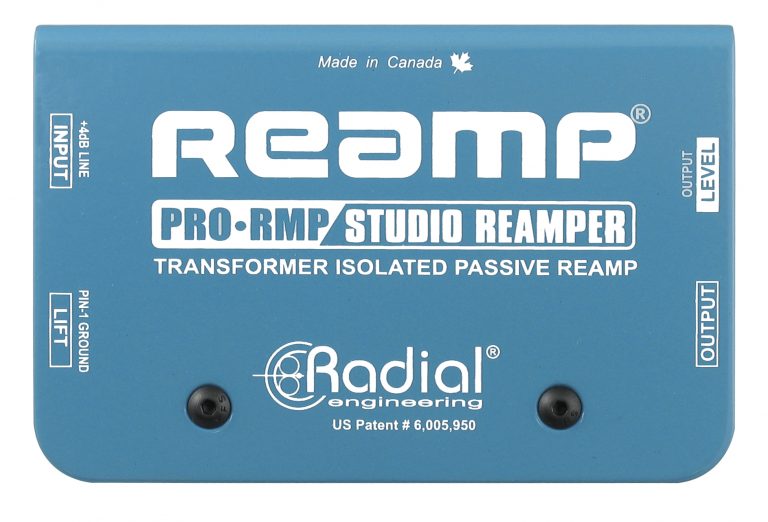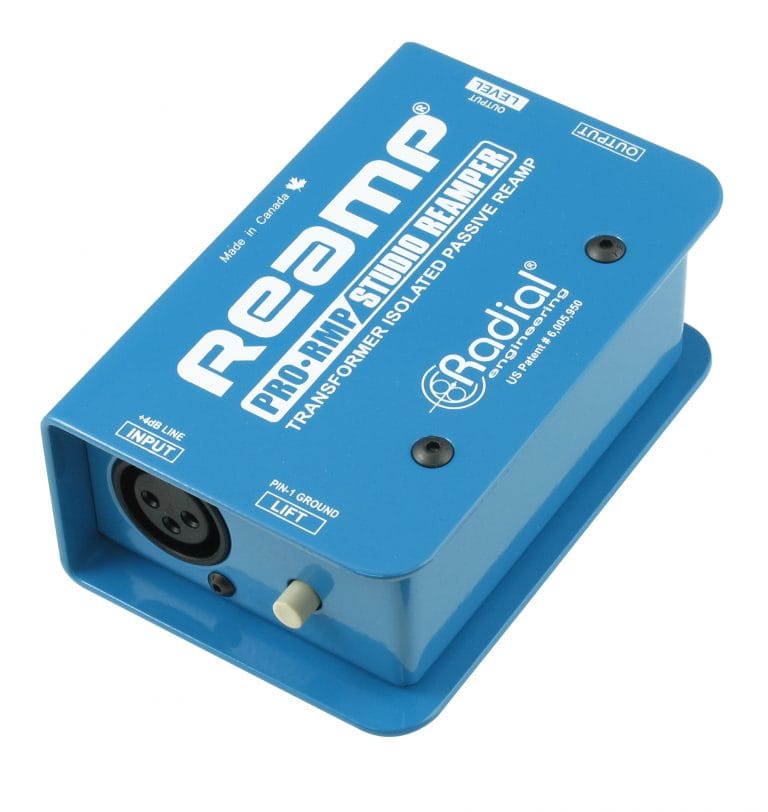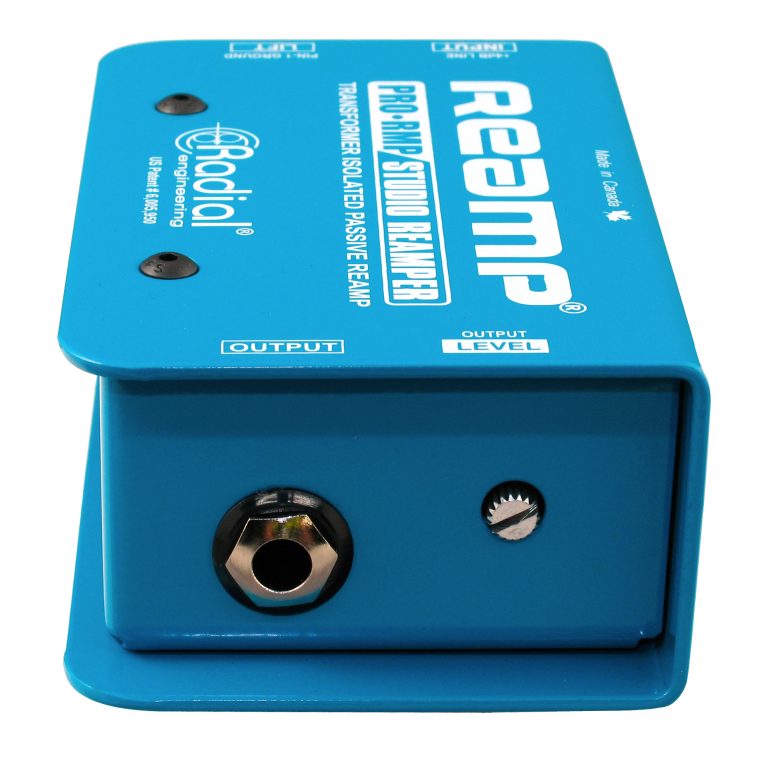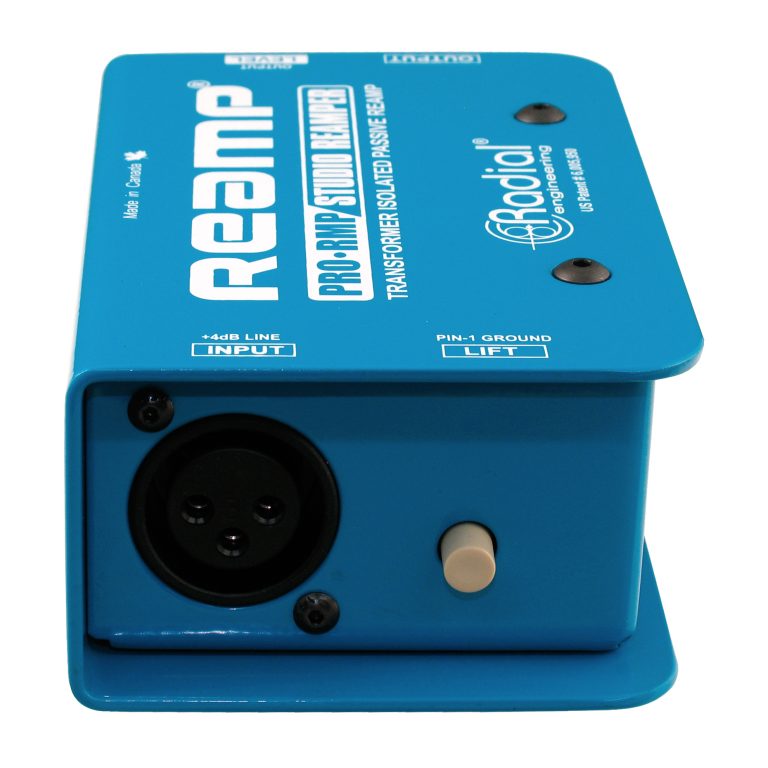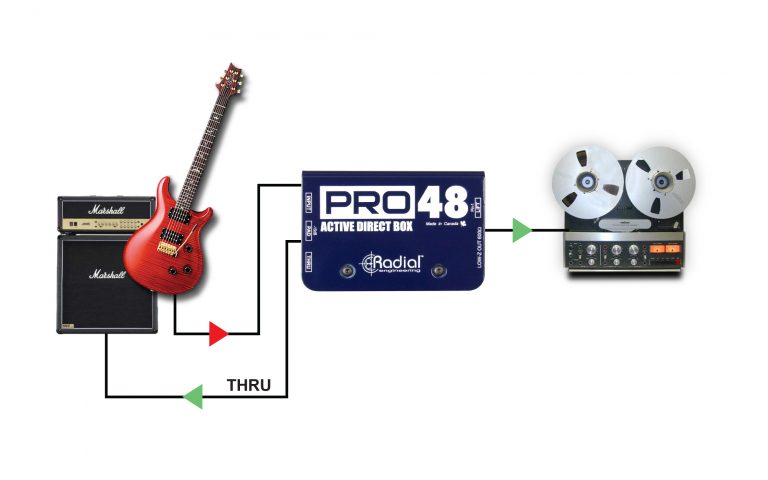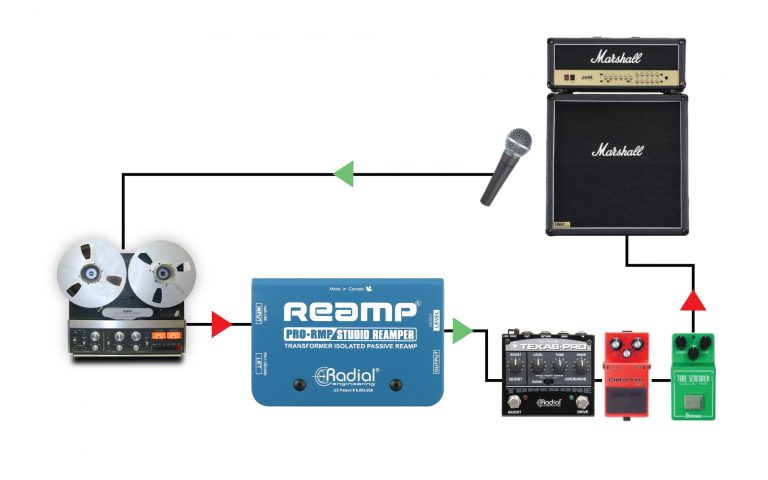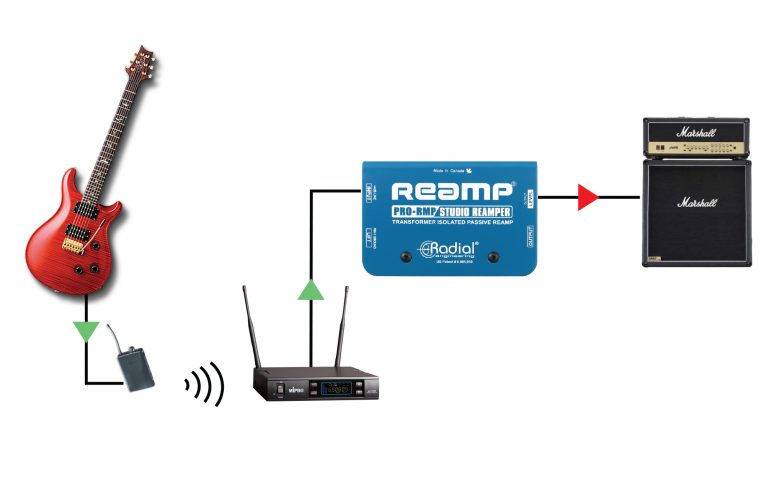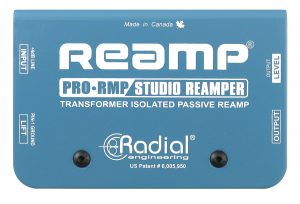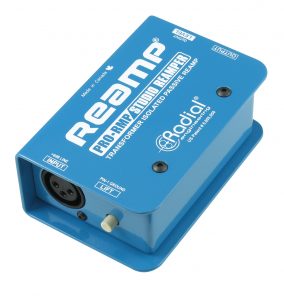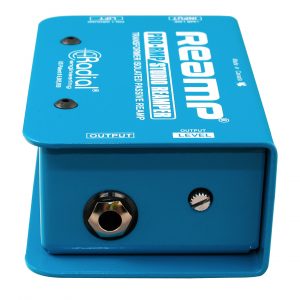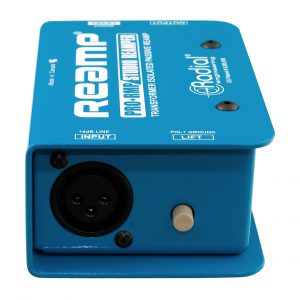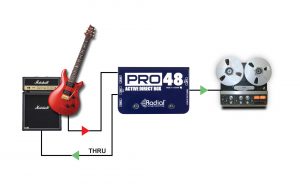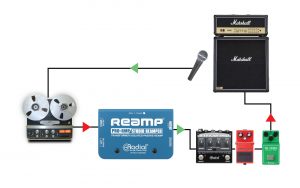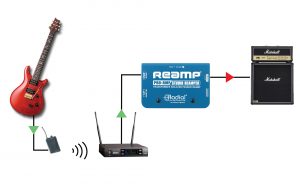If you don't see the question you had in mind here, feel free to enter in the form provided along with your email address so we may send the reply directly to you. Thanks for your participation!
What is the difference between the Radial ProRMP and the Radial X-Amp?
The ProRMP is passive while the X-Amp is active. This means that the ProRMP employs a transformer while the X-Amp employs an active buffer or internal amplifier to drive the signal. The benefit to having the active buffer is that you can drive more than one amp at the same time and adjust the level with less effect on the tone. The benefit to a passive Reamper like the ProRMP is that it does not require any power and it costs less.
What is the difference between the Radial ProRMP the new Reamp™ JCR?
Both units are similar in that they are both passive. The difference lies in the quality of the transformer. The Reamp JCR employs the original John Cuniberti designed transformer with an ultra low noise eliminating MuMETAL® shell. Both work very well and are often compared. Because the ProRMP is produced in larger quantities, it is more affordable.
What is the difference between using a Radial JDI backwards for Reamping versus using the ProRMP?
The ProRMP’s transformer is designed to accept a +4dB balanced line-level input from a recording system while a direct box is designed to accept a very low -50dB signal from an instrument. Both will work. The ProRMP is optimized for recording while the JDI is optimized to work the other way round as a direct box. The JDI will likely saturate due to the much finer wire needed to effectively do the job.
What is the best DI to use when re-amping?
This is truly a matter of taste and budget. Most folks generally prefer an active direct box like the Radial J48 or Pro48 for re-amping as this delivers a good clean signal to the recorder. The better the source, the better the outcome!
Can I split the signal from the ProRMP to drive more than one amp?
You could but you may run into ground loops. The Radial X-Amp is equipped with two outputs one of which is transformer isolated to eliminate this problem. For top end users, the Radial JD7 Injector has 6 amp outputs that are isolated from each other that allow you to drive 6 amps at the same time.
Do engineers record vocals and drums by Reamping
Yes! More and more, engineers are beginning to introduce effect pedals like the Radial Tonebone Classic distortion onto voice tracks to thicken them up and create new and exciting effects. Do not follow tradition! Reamping is all about discovering new sounds!
Why are folks using the Radial ProRMP on wireless systems?
Guitarists hate the sound of their wireless systems. This is because the output from a wireless is buffered and tends to sound hyped and artificial. The Radial ProRMP’s internal transformer naturally warms up the tone and this sounds more like a guitar connected directly to an amp.
Can I use the ProRMP (or JCR) to feed the balanced output from my mixer to my Roland JC120 guitar amp?
Yes. The ProRMP will help you by providing a proper impedance and the transformers will warm the tone. You also benefit with transformer isolation which in turn will help eliminate hum and buzz caused by ground loops.
Can I use the Radial ProRMP backwards for Reamping?
No. The ProRMP is designed to take a buffered line level device (+4dB) and reduce the level to -20dB or lower to feed a guitar amplifier and pedals. This is done passively using an attenuator and a transformer that will load the pickup down and alter the tone.
Can I use the ProRMP backwards to work like a direct box?
No. The transformer is not sensitive enough to act like a DI box. You could possibly use it for high level devices, but a DI box would be much better suited for the task.

